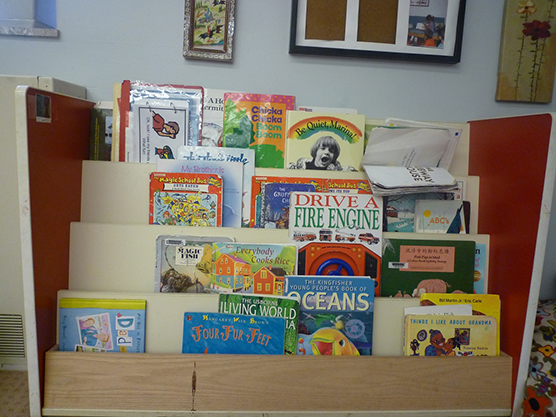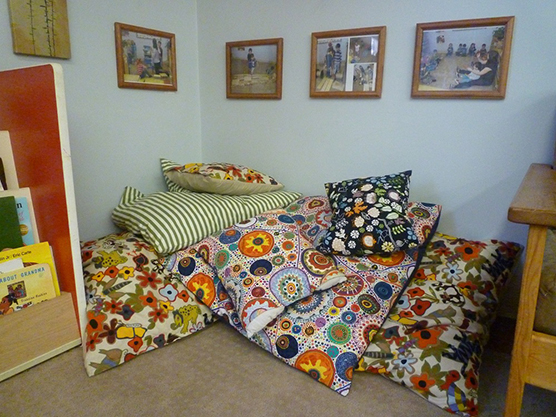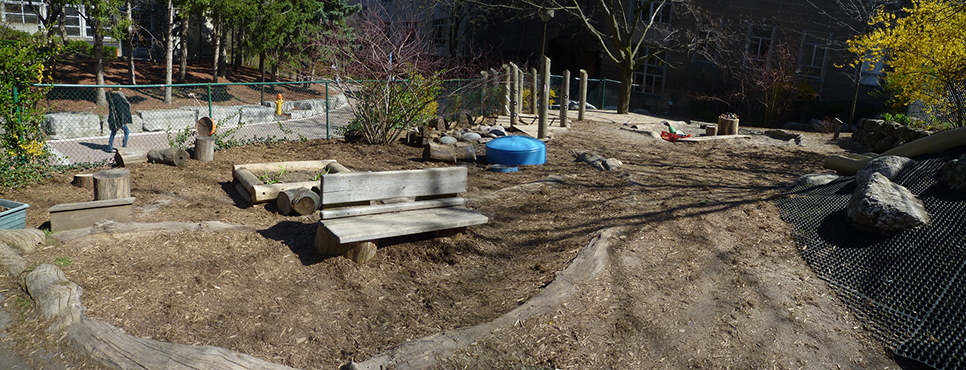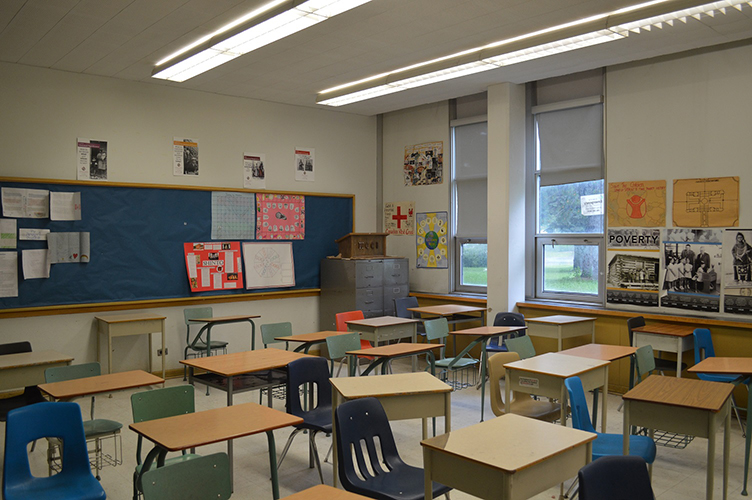Warm-up Activity
Given that accessibility is about entering into a space, it is important to think about physical access, but accessibility can also be about the relationships, the curriculum, and the instruction that is taking place in educational settings. In the photographs that are used in this activity, the spaces may be accessible for some students. However, it is important to recognize that accessibility is specific to particular people. Therefore, a space may be accessible from the perspective of mobility, with a ramp, and open spaces, as well as anchors to hold onto, but may be inaccessible from a social standpoint. For example, social inaccessibility is evident in a classroom that is over-stimulating, or that has social groupings that are exclusive.
Instructions
Image 1: Indoor Classroom

Image 2 and 3: Reading Corner of Classroom


Image 4: Outdoor Play Area

Image 5: Highschool Classroom

Discussion Questions
- Are these spaces accessible?
- What activities might take place in these settings?
- Are these settings conducive to learning and teaching?
- What accessibility considerations might you have in these environments?
Probing Questions
- Think about physical access, lighting and visual information, sound, emotional responses, relationships, etc.
- Try to imagine physically entering the space from the perspective of a range of characteristics (mobility, sensory, developmental, cultural/linguistic, gender, socio-economic, etc.).
- The AODA legislation refers to several areas to consider in accessibility including: customer service, employment, information and communications, transportation and design of space. However, these areas are not typically applied to education. How would each of these areas be impacted by the processes that take place in this space? Or in other educational spaces?